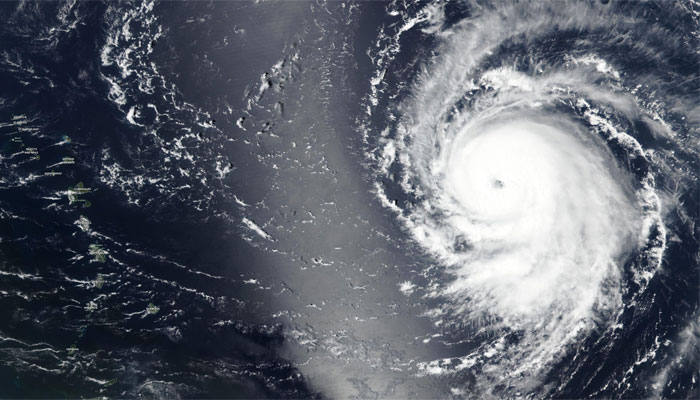Hurricane Lee to potentially strengthen into first category five storm of Atlantic season
"Additional strengthening is expected tonight," US National Hurricane Centre said
Hurricane Lee has turned into a category four storm with wind speeds of up to 130mph (215km/h), potentially becoming the first category five hurricane of the Atlantic season by Friday, forecasters said.
Lee, which rapidly intensified from a category one within hours, is the 12th named storm of the Atlantic hurricane season, which runs from June to November and is currently not expected to make landfall based on its path.
"Additional strengthening is expected tonight," said the US National Hurricane Center (NHC) at 17:00 EDT (21:00 GMT) on Thursday.
The NHC predicts dangerous surf and rip currents to reach the northern Caribbean by Friday, Puerto Rico, and the US east coast by Sunday, with Lee currently 780 miles east of the northern Leeward Islands, the point where the Caribbean meets the Atlantic Ocean, BBC reported.
The trajectory of the storm — that follows Hurricane Idalia the record-breaking powerful storm to hit Florida — was informed to US President Joe Biden.
Furthermore, Tropical Depression 14 has reverted to Tropical Storm Margot, which is expected to strengthen over the weekend but will remain over open water. Meanwhile, Hurricane Jova, a category five to four storm, has slightly weakened from its previous position in the Pacific Ocean.
The storm, originating from southwestern Mexico, is not expected to make landfall either during the 2023 Atlantic hurricane season, which is expected to be more active than average.
Extreme weather has become a frequently occurring event globally over the past few years, especially after a drastic and constant rise in human-induced climate change.
Extreme record-breaking heatwaves across Europe, Asia and the US made 2023 the hottest year since it was first recorded and has resulted in record deaths throughout the year.
Additionally, torrential rains have resulted in flash floods across the world and have also caused much damage and casualties.
Although it is still uncertain how climate change may affect the frequency of tropical storms, rising sea surface temperatures will warm the atmosphere above and provide hurricanes with more fuel.
They consequently have a higher likelihood of intensifying with more severe rainfall.
-
Drunk driver tries to snatch San Diego deputy’s gun during chase
-
Rare Pokémon cards worth $100k stolen in New York shop robbery
-
Nobel Prize snub hardens Donald Trump's tone on ‘peace’
-
FBI’s most wanted caught after 10 years in Mexico
-
UK Starmer rules out US trade war, calls for ‘calm diplomacy’ over Greenland
-
IMF’s World Economic Outlook: ‘Resilient’ 2026 growth expected amid tariffs & AI boom
-
South Korea, Italy strengthen ties to bolster AI technology, business, defence cooperation
-
Elon Musk shares crucial advice as China’s birth rate hits record low since 1949












